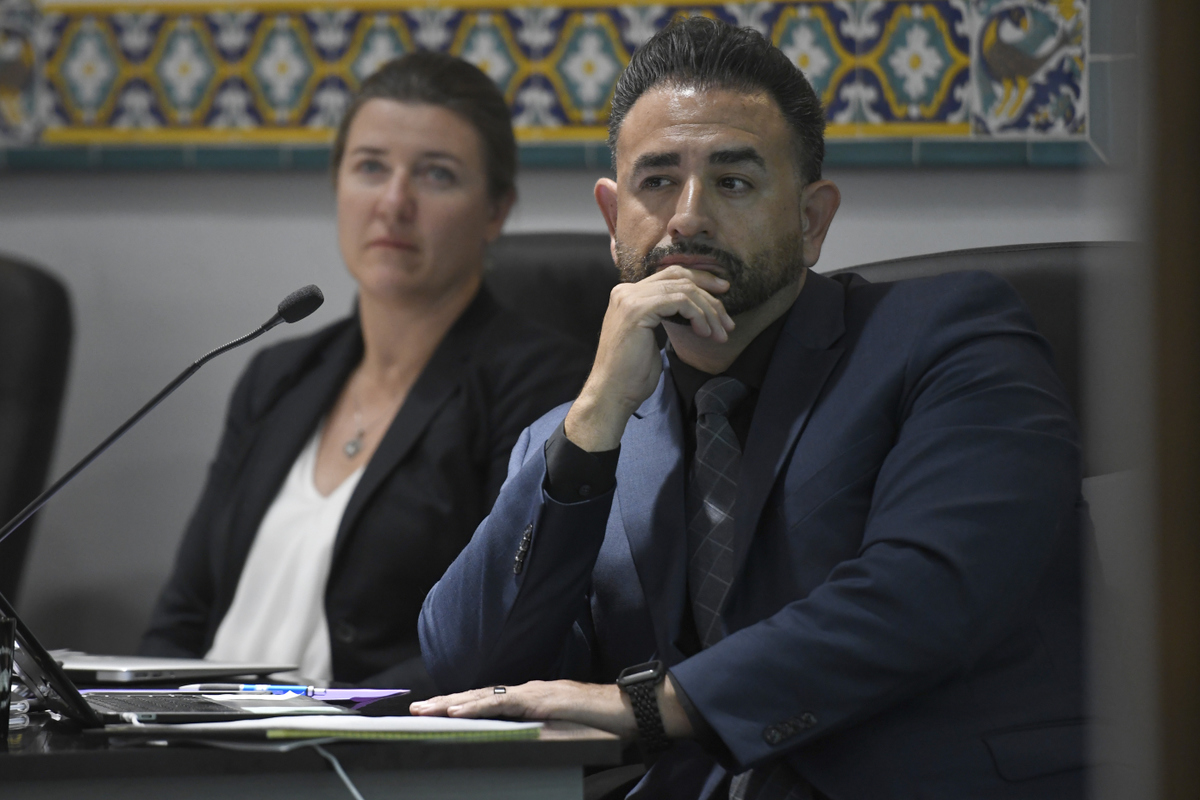District Explores Opening up GATE Program
Washington Magnet-School Parents Protest to Keep Separate Classes, Latinx Students Less Likely to Score

Six months ago, Washington Elementary parents ripped into the Santa Barbara Unified School District for attempting to terminate the school’s self-contained, gifted-student magnet classes and replace them with an integrated model — mixing the gifted kids into regular classrooms. Although the overwhelming backlash forced the district to keep the magnet-class model, the district presented additional research on the integrated model Tuesday night in what seemed like a push to expand it in other schools.
The GATE (Gifted and Talented Education) classes at Washington contain about 118 students in the 3rd to 6th grades. The other 190 GATE students throughout the district are integrated into non-GATE classrooms in groups of five to seven and are taught by a certified GATE teacher. A lottery is used to assign GATE-identified students to either magnet or integrated, or cluster, classrooms.
“We parents come before the board again, twice in six months, asking you not to allow Dr. Ramirez and the administration to dismantle the GATE magnet classrooms,” said Laurie Dahl, mother of a 3rd grader in GATE at Washington. “Earlier this year the board demanded that Dr. Ramirez return with research if he intended to propose eliminating the program. He has not returned with conclusive research, rather he has returned with an experimental study, an opportunity for Santa Barbara GATE students to be guinea pigs.”
Tuesday night’s school board meeting, which started its more than four-hour session with a packed audience, presented data that revealed 35 percent of Washington Elementary students tested into the GATE program, nearly four times more than the three schools with the next largest populations — 9 percent. Latinx students were identified as gifted considerably less often than their white counterparts.
“I’m here to voice my support for Dr. Ramirez and the district’s very early discussions on reimagining GATE within our school district,” said Dolores Inés Casillas, a mother of two who was the only speaker to support the district’s original plan to eliminate the magnet model.
“There is a national call to dismantle GATE as we know it … GATE programs have been proven to be overwhelmingly full with middle- to upper-class families and do not offer enough opportunities to [low] income … students who often are also students of color and English-language learners.”
Raul Ramirez, assistant superintendent of education who first proposed the unpopular idea to eliminate magnet classes, reiterated that the district is not phasing out the highly coveted Washington classes. He instead kept the presentation focused on research detailing the benefits of cluster models and the demographics of Santa Barbara’s gifted students.
“I heard someone say these graphs are placed as such in order to appear jarring,” Ramirez said. “I don’t know that the bars need to be this way in order to be jarring. The numbers speak for themselves … Although we have effectively the same number of students identified overall [white versus Latinx], the number of GATE Latinx students across the district is 116 in grades 3-6 and the number of non-identified students is 1,546, which simple mathematics show is about a 7 percent identification rate.”
He said the district has been asked to participate in USC’s Project Reach Each. The research project aims to improve literacy in gifted learners in cluster model classrooms; increase teacher and parent’s ability to recognize gifted behaviors in students, particularly minority students; train more teachers to instruct GATE students; and close the gap between white and minority gifted students. Although the project is not up for a vote and was only presented as a discussion item, it distressed many who felt the research supporting it wasn’t stable.
“We need to really consider if we need to expand [the magnet model] rather than contract it,” Boardmember Kate Ford said. She was the only board member who really challenged the report. “What is involved in this cluster model where you see these cluster-model schools that have hardly any identified kids? I see lots of red flags here that lots of people would like to talk about very specifically, rather than what you’re referring to as this broader, cultural context.”
The meeting went hours into the night, with no real closure on the polarizing issue as the board wrapped up near 11 p.m. They will reconvene October 22 at 720 Santa Barbara Street.



